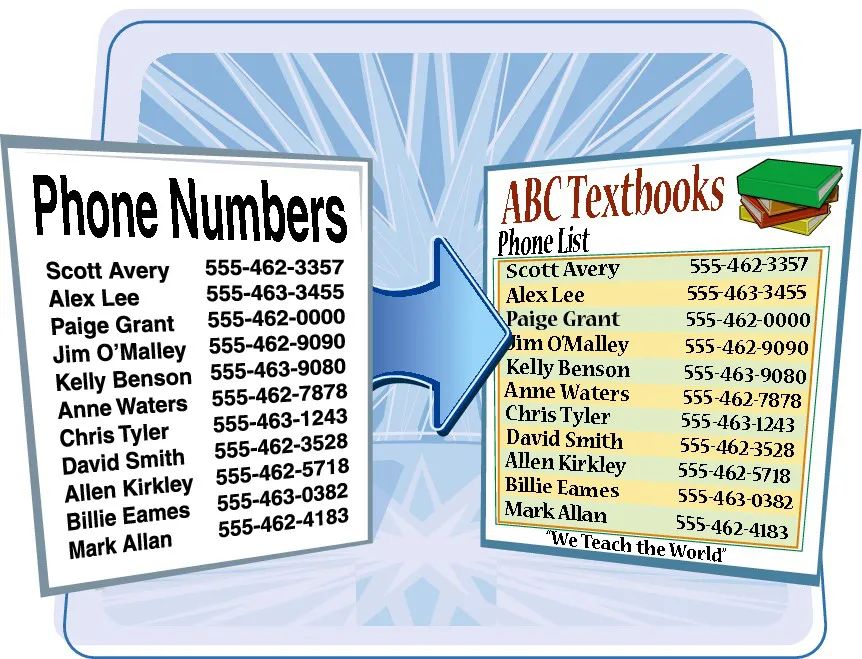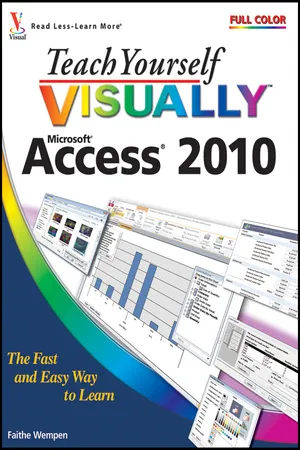Chapter 1: Getting Started with Access 2010
Are you new to Access or upgrading to the latest version? This chapter explains how to create a database as well as how to navigate through the new-and-improved Microsoft Office Access 2010 interface.

An Introduction to Access 2010
Start and Exit Access 2010
Create a Blank Database
Close a Database
Create a Database by Using a Template
Open a Database File
Understanding the Access 2010 Interface
Change the Navigation Pane View
Open and Close an Object
View an Object
An Introduction to Access 2010
Microsoft Access 2010 is a program for creating databases to store business or personal data. You can use Access to create, retrieve, and manage large or small collections of information.

Relational Databases
Microsoft Access creates relational databases — that is, databases that can contain multiple tables with links between them. For example, a business may have a Customers table for storing customer contact information and an Orders table for storing information about orders placed. Each customer in the Customers table has a unique ID, and each order in the Orders table references a specific customer ID.

Tables, Records, and Fields
In Access, data is stored in tables, and each individual entry in the table is called a record. For example, in a Customers table, the information about each customer is a separate record. Each record is composed of one or more fields that contai...
